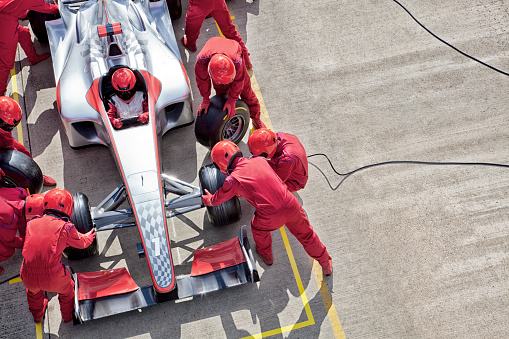
You’ve seen in our last articles how the frenzy of internal combustion engine-powered wheeled vehicles started. It was only a matter of time before the man to see the potential of the car and try to make it go faster. Thus, the race of achieving the land speed record.
You should know a thing or two about how the land speed record is calculated: you have to travel a fixed distance twice, in opposite directions, within an hour. The resulting times of the two opposite laps are averaged and you’ve got yourself the considered time of the attempt. But this isn’t the whole story: your average time must be at least one percent smaller than the record you attempt to beat to be taken into account. The are a lot of classes of wheeled cars that took on the land speed record challenge, depending on the type of engine, engine size, or type of fuel. Generally speaking, we’ll take a look at the top speeds some daredevils achieved over history, regardless of engine size, type, and so on.
The first, official automobile land speed record was set by a german called Gerhardt Schnell in a furious gas-powered turbocharged BMW. We’re joking. The first land speed record was achieved in December 1898 by a French racing driver called Gaston de Chasseloup-Laubat, who was also a Count, in an electric-powered car. He averaged 63.13km/h on his first attempt and, a month later, he reached an average of 66.65 km/h. He drove a funny-looking car, which you can see below.
It was a funny-looking car in which the driver was sitting like he was about to poop. Nevertheless, this set the tone for upcoming land speed records.
In April 1899, Gaston’s arch-rival, a Belgian named Camille Jenatzy was the first man to go over the at the time psychological barrier of 100km/h. Camille Jenatzy was also driving an electric car. It was a guy named Leon Serpollet who, in April 1902 reached 120.8km/h in a steam-powered car called Easter Egg, which you can see below.
You can see a big improvement over Gaston’s car in terms of aerodynamics. Aerodynamics will prove to be one of the keys to going faster and faster. In the same year as Leon Serpollet, an American driver, William Vanderbilt reached 122.4km/h, setting the first record using an internal combustion engine-powered car.
You can see Vanderbilt here, in his internal combustion engine-powered car at Daytona Beach, the place where he set the first record of its kind.
The barrier of 200km/h was broken by an American called Fred Mariott 4 years later, in 1906, in a Stanley Steamer, which was a steam-powered car. He reached 205.5 km/h at Daytona Beach setting a steam-powered car record that will not be broken until 2009. You can see the Stanley Steamer below driven by Fred Mariott, who set a record that, in its class, would last a century.
This car looked like a rocket and by those times’ standards, it ran like one, also. Its sleek, long, low body meant that it could cut through the air more easily, decreasing drag. You will see that over the years, the next record-setting cars will have bodies originating in Stanley Steamer’s design. Fortunately for the gas-burning enthusiasts, the Stanley Steamer was the last of its breed to set a record. The era of internal combustion engines began and until this day, it didn’t end. We’ll take a look in our next article at how the supremacy of internal combustion engine power began in terms of land speed records.
